Long-Term Forecast of Peak Power Demand for Poland—Construction and Use of Simplified Forecasting Models
Abstract
1. Introduction
1.1. Complex Forecasting Models in Energy and Climate Analysis
1.2. The Role of Simplified Forecasting Models
2. The Logistic Equation as a Universal Tool in the Analysis of Population Dynamics and Long-Term Forecasts
- Initial growth—when the population grows almost exponentially.
- Growth slowdown—as the carrying capacity of the environment approaches , growth slows down.
- Steady state—when population growth stops and .
- SE—asymptotic monotonic convergence to K, the equilibrium of the system;
- SB—striving for balance;
- O—convergence to K with oscillations;
- BI—bifurcation;
- AB—a jump to K in the first few steps;
- CH—chaos (including impossible events, such as ).
2.1. Using the Prigogin Equation to Build a Long-Term Peak Power Demand Forecast for Poland
2.2. Long-Term Gross Electricity Demand Scenarios for Poland Until 2040
3. Author’s Forecast of Long-Term Peak Power Demand for Poland Until 2040
4. Discussion
- 1.
- This paper proposes the use of a simplified forecasting model based on a modified Prigogin logistic equation. This model is based on deterministic chaos theory and describes the development of the population (or analogously, the power system) as a nonlinear system far from equilibrium. Equation (4) allows us to take into account phenomena such as a sudden increase in the demand, bifurcations and potential chaotic states in the power system. This model was tested and adapted to forecast the long-term peak power demand in Poland, using parameters such as the annual growth factor () and the asymptotic limit of the system’s development ().
- 2.
- Based on strategic documents, such as the annex to PEP2040 [44] and scenario analyses up to 2040 [46], several gross energy demand paths were identified. The variants predicted an annual gross energy demand in Poland of 230–235 TWh in 2040 with a corresponding increase in the peak power demand from 28.7 GW (2024) to over 34.5 GW (2040). The Prigogin model allowed for the dynamic linking of energy consumption with the power demand by taking into account the average annual load factor (), in accordance with the relation in (3). The use of this relation allowed for the transformation of energy consumption forecasts (e.g., for RES, nuclear energy and coal energy scenario variants) into the power demand using scenarios (e.g., increasing system management efficiency).
- 3.
- Compared to complex models such as the WEM, PRIMES and POLES, the proposed Prigogin method offers several significant advantages:
- Low computational complexity—the model does not require advanced IT infrastructure, which makes it accessible to institutions with limited resources.
- Speed of implementation—fast calibration and scenario generation.
- The ability to analyze chaos and bifurcations—a unique feature of the Prigogin model allows for the assessment of unpredictable dynamic changes (e.g., sudden increases in the demand due to weather extremes).
- Consistency with real historical data—as shown in Table 4 in this article, the model achieved high consistency with PSE data for the years 2014–2024.
- 4.
- A disadvantage of the Prigogin model is its limited ability to integrate the consideration of sectoral policies, technologies and prices, with the ability to do so being a strong point of models such as the PRIMES or WEM. However, when using hybrid models (i.e., the Prigogin model + scenarios from the POLES or PRIMES), it is possible to obtain a simultaneously comprehensive and effective decision-making tool.
- 5.
- The adoption of the simplified Prigogin model in the context of planning the development of the national power system brings the following benefits:
- The transparency and interpretability of the results, which facilitates communication with political and social stakeholders.
- The possibility to quickly test alternative development paths, e.g., the accelerated electrification of transport or changes to the .
- Cost-effectiveness—with low computational costs and required amounts of input data, it is possible to obtain solid forecasts for investment planning purposes.
5. Conclusions
- 1.
- The Effectiveness of the Simplified Forecasting Models:This study demonstrates that, despite their limitations compared to complex simulation tools (such as the PRIMES, WEM or POLES), simplified models based on the Prigogine equation can provide fast, low-cost and sufficiently accurate long-term forecasts of the peak power demand. These models are particularly valuable when detailed input data is unavailable or when rapid assessments are needed.
- 2.
- The Application of the Prigogine Equation:A modified Prigogine equation, derived from the classical logistic model developed by Verhulst, was adapted to model the annual average load factor () of the Polish power system. The key parameters included the following:
- R—the growth rate coefficient (optimized to 0.3938);
- K—the saturation level or development ceiling for the (determined to be 0.7688 based on historical trend extrapolation).
The model demonstrated very good historical fit:- The Mean Absolute Percentage Error (MAPE) for the forecast was ;
- The MAPE for the peak power demand forecast (validation forecast for 2014–2024) was .
- 3.
- Gross Electricity Demand Scenarios:Three long-term electricity demand scenarios for Poland through 2040 were considered (coal-based, nuclear and RES-driven), based on institutional forecasts (e.g., PSE, FNEZ). The Prigogine equation was used to predict future ALF values, which were then combined with energy demand forecasts to calculate peak power using the formula (3).
- 4.
- Forecast Results up to 2040:Depending on the adopted energy demand scenario, the demand differed:
- In the RES-based scenario, the peak power demand could reach nearly 40 GW by 2040;
- In the coal-based scenario, the demand would be slightly lower, around 38–39 GW.
- These results indicate growing strain on Poland’s power system due to economic development and electrification trends.
- 5.
- Strategic Implications:
- The Prigogine equation has proven to be a valuable and flexible tool for long-term energy planning, especially under uncertainty.
- It allows for continuous recalibration and quick adjustments to changing economic or policy conditions.
- The model supports strategic decision-making and complements the use of more detailed simulations, especially in the early planning phases.
- Its theoretical foundation in non-equilibrium thermodynamics aligns with the complex, dynamic nature of modern power systems.
Funding
Data Availability Statement
Conflicts of Interest
References
- Popławski, T. Theory and Practice in Planning the Development and Operation of Power Systems; Selected Aspects; Czestochowa University of Technology Publishing House: Czestochowa, Poland, 2013. (In Polish) [Google Scholar]
- International Energy Agency. Global Energy and Climate Model. Documentation. 2024. Available online: https://www.iea.org/reports/world-energy-model (accessed on 15 April 2025).
- International Energy Agency. World Energy Outlook 2023. 2023. Available online: https://www.iea.org/reports/world-energy-outlook-2023 (accessed on 15 April 2025).
- E3MLab/ICCS. PRIMES Model. Available online: https://e3modelling.com/modelling-tools/primes/ (accessed on 15 April 2025).
- European Commission. Impact Assessment Accompanying the 2030 Climate Target Plan. 2020. Available online: https://eur-lex.europa.eu/legal-content/EN/TXT/?uri=CELEX:52020SC0176 (accessed on 15 April 2025).
- IEA-ETSAP. Energy System Models: PRIMES, POLES, TIMES—A Comparative Overview. Available online: https://iea-etsap.org (accessed on 15 April 2025).
- Criqui, P.; Mima, S.; Kitous, A.; Hamdi-Cherif, M. The POLES Energy Model: Technical Overview. CNRS–LEPII and Enerdata. 2015. Available online: https://www.enerdata.net/solutions/poles-model.html (accessed on 15 April 2025).
- TU Wien—Energy Economics Group. Green-X Model Overview. Available online: https://www.green-x.at (accessed on 15 April 2025).
- Schöniger, F.; Resch, G.; Suna, D.; Widhalm, P.; Totschnig, G.; Pardo Garcia, N.; Hasengst, F.; Formayer, H.; Maier, P.; Leidinger, D. The Impact of Climate Change on Electricity Demand and Supply Profiles in Europe Until 2100. 2024. Available online: https://ssrn.com/abstract=4978968 (accessed on 20 May 2025).
- Chudy, M.; Karmakar, S.; Wu, W.B. Long-term prediction intervals of economic time series. arXiv 2020, arXiv:2002.05384. [Google Scholar] [CrossRef]
- Pindyck, R.S.; Santen, N.P. Uncertainty in forecasts of long-run economic growth. Proc. Natl. Acad. Sci. USA 2018, 115, 5409–5414. [Google Scholar] [CrossRef]
- Weron, R. Modeling and Forecasting Prices in the Electricity Market; Scientific and Technical Publishing House: Warsaw, Poland, 2006. (In Polish) [Google Scholar]
- Tsai, P.-H.; Berleant, D.; Segall, R.S.; Aboudja, H.; Batthula, V.J.R.; Duggirala, S.; Howell, M. Quantitative technology forecasting: A review of trend extrapolation methods. arXiv 2024, arXiv:2401.02549. [Google Scholar] [CrossRef]
- Hao, J.; Liu, F. Improving long-term multivariate time series forecasting with a seasonal-trend decomposition-based 2-dimensional temporal convolution dense network. Sci. Rep. 2024, 14, 1689. Available online: https://www.nature.com/articles/s41598-024-52240-y (accessed on 10 May 2025). [CrossRef] [PubMed]
- Abdelkader, M.; Benbouzid, M.; El Bouzidi, Y.; El Amrani, M.; El Fadili, M.E.H. Modeling and forecasting historical volatility using econometric models: A comparative study. J. Risk Financ. Manag. 2024, 17, 300. [Google Scholar] [CrossRef]
- Shah, D.; Thaker, M. A review of time series forecasting methods. Int. J. Res. Anal. Rev. 2024, 11, 749. Available online: https://www.researchgate.net/publication/379862462_A_Review_of_Time_Series_Forecasting_Methods (accessed on 10 May 2025).
- Chauvet, M.; Piger, J. Predicting recessions: A new approach for identifying leading indicators and forecast combinations. International Monetary Fund. 2016. Available online: https://www.imf.org/en/Publications/WP/Issues/2016/12/31/Predicting-Recessions-A-New-Approach-for-Identifying-Leading-Indicators-and-Forecast-25288 (accessed on 10 May 2025).
- Garnitz, J.; Lehmann, R.; Wohlrabe, K. Forecasting GDP All over the World Using Leading Indicators Based on Comprehensive Survey Data. CESifo Working Paper No. 7691. 2019. Available online: https://www.econstor.eu/handle/10419/201917 (accessed on 10 May 2025).
- Groen, J.J.J.; Kapon, G.A. A comparison of monthly global indicators for forecasting growth. Int. J. Forecast. 2021, 37, 1276–1295. [Google Scholar] [CrossRef]
- Lehmann, R.; Wohlrabe, K. The forecasting power of the ifo Business Survey. J. Bus. Cycle Res. 2022, 18, 1–21. [Google Scholar] [CrossRef]
- Xie, J. Identifying Optimal Indicators and Lag Terms for Nowcasting Models. International Monetary Fund. 2023. Available online: https://www.imf.org/en/Publications/WP/Issues/2023/03/02/Identifying-Optimal-Indicators-and-Lag-Terms-for-Nowcasting-Models-530335 (accessed on 10 May 2025).
- Atesongun, A.; Gulsen, M. A hybrid forecasting structure based on ARIMA and artificial neural network models. Appl. Sci. 2024, 14, 7122. [Google Scholar] [CrossRef]
- Bulut, C.; Hudaverdi, B. Hybrid approaches in financial time series forecasting: A stock market application. EKOIST J. Econom. Stat. 2022, 37, 53–68. [Google Scholar] [CrossRef]
- Smyl, S.; Dudek, G.; Pełka, P. ES-dRNN: A hybrid exponential smoothing and dilated recurrent neural network model for short-term load forecasting. arXiv 2021, arXiv:2112.02663. [Google Scholar] [CrossRef]
- Zhong, Y.; Cheng, Q.; Qin, L.; Xu, J.; Wang, H. Hybrid deep learning for AI-based financial time series prediction. J. Econ. Theory Bus. Manag. 2024, 1, 27–35. [Google Scholar] [CrossRef]
- Peujio Fozap, F.M. Hybrid machine learning models for long-term stock market forecasting: Integrating technical indicators. J. Risk Financ. Manag. 2025, 18, 201. [Google Scholar] [CrossRef]
- Dai, S.; Meng, F.; Dai, H.; Wang, Q.; Chen, X. Electrical peak demand forecasting: A review. arXiv 2021, arXiv:2108.01393. [Google Scholar]
- International Energy Agency (IEA). Energy Technology Perspectives. 2020. Available online: https://www.iea.org (accessed on 18 May 2025).
- ENTSO-E. Ten-Year Network Development Plan (TYNDP). 2023. Available online: https://tyndp.entsoe.eu (accessed on 18 May 2025).
- Verhulst, P.F. Notice sur la loi que la population poursuit dans son accroissement. Corresp. Math. Phys. 1838, 10, 113–121. [Google Scholar]
- Anokye, M.; Donkoh, E.K.; Ofori, M.F.; Adom-Konadu, A. Full Delay Logistic Population Model with Sustainable Harvesting. J. Appl. Math. 2022, 2022, 6777827. [Google Scholar] [CrossRef]
- Ornelas, A.; Delgado-Vences, F.; Morales-Bojórquez, E.; Cruz-Escalona, V.H.; Marín-Enríquez, E.; Hernández-Camacho, C.J. Modeling the Biological Growth with a Random Logistic Differential Equation. Environ. Ecol. Stat. 2023, 30, 233–260. [Google Scholar] [CrossRef]
- García-Algarra, J.; Galeano, J.; Pastor, J.M.; Iriondo, J.M.; Ramasco, J.J. Rethinking the Logistic Approach for Population Dynamics of Mutualistic Interactions. arXiv 2013, arXiv:1305.5411. [Google Scholar] [CrossRef]
- Marchetti, C.; Meyer, P.S.; Ausubel, J.H. Human Population Dynamics Revisited with the Logistic Model: How Much Can Be Modeled and Predicted? Technol. Forecast. Soc. Change 1996, 52, 1–12. [Google Scholar] [CrossRef]
- Ershkov, S.V. Logistic Equation of Human Population Growth (Generalization to the Case of Reactive Environment). viXra Quant. Biol. 2011, 1103.0085v1. Available online: https://vixra.org/abs/1103.0085 (accessed on 18 May 2025).
- Hernando, A.; Plastino, A. Scale-Invariance Underlying the Logistic Equation and Its Social Applications. arXiv 2012, arXiv:1204.2422. [Google Scholar] [CrossRef][Green Version]
- Méndez, V.; Assaf, M.; Campos, D.; Horsthemke, W. Stochastic Dynamics and Logistic Population Growth. arXiv 2015, arXiv:1506.01137. [Google Scholar] [CrossRef] [PubMed]
- Rodrigo, M.; Zulkarnaen, D. Mathematical Models for Population Growth with Variable Carrying Capacity: Analytical Solutions. Mathematics 2022, 2, 466–479. [Google Scholar] [CrossRef]
- Miranda, L.C.M.; Lima, C.A.S. On the Logistic Modeling and Forecasting of Evolutionary Processes: Application to Human Population Dynamics. Technol. Forecast. Soc. Change 2010, 77, 699–711. [Google Scholar] [CrossRef]
- Petroni, N.C.; De Martino, S.; De Siena, S. Logistic and Q-Logistic Models in Population Dynamics: General Analysis and Exact Results. arXiv 2020, arXiv:2004.10478. [Google Scholar]
- Prigogine, I.; Stengers, I. From Chaos to Order; State Publishing Institute: Warsaw, Poland, 1990. (In Polish) [Google Scholar]
- Dobrzańska, I.; Dąsal, K.; Łyp, J.; Popławski, T.; Sowiński, J. Forecasting in the Power Industry; Selected Issues; Częstochowa University of Technology Publishing House: Częstochowa, Poland, 2002. (In Polish) [Google Scholar]
- Baczyński, D.; Parol, M.; Piotrowski, P. Contemporary Problems of Forecasting in the Power Industry; Selected Issues; Warsaw University of Technology Publishing House: Warsaw, Poland, 2020. (In Polish) [Google Scholar]
- Ministry of Climate and Environment. Energy Policy of Poland Until 2040. Warsaw. 2021. Available online: https://www.gov.pl/web/klimat/polityka-energetyczna-polski (accessed on 18 May 2025). (In Polish)
- Polish Power Grids, S.A. Assessment of Resource Adequacy at the National Level 2025–2040, November 2024. Available online: https://www.pse.pl/-/publikacja-raportu-zgodnie-z-art-15-i-ustawy-prawo-energetyczne?safeargs=696e686572697452656469726563743d74727565 (accessed on 18 May 2025). (In Polish).
- Stryjecki, M. Forecast of the Structure of the Polish Power System Until 2040; Coal, Nuclear, RES Scenario; Foundation for Sustainable Energy: Warsaw, Poland, 2019. (In Polish) [Google Scholar]
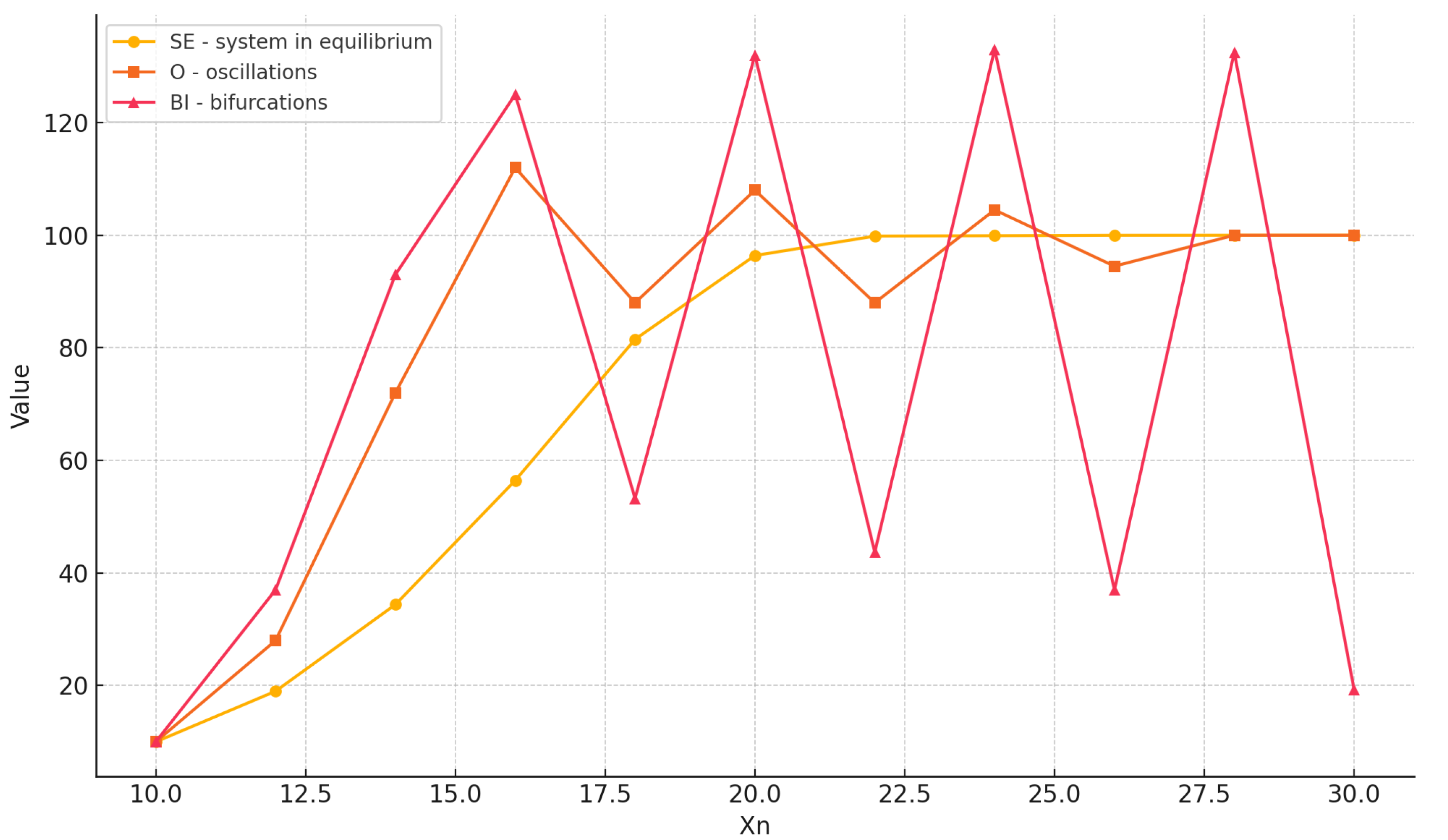

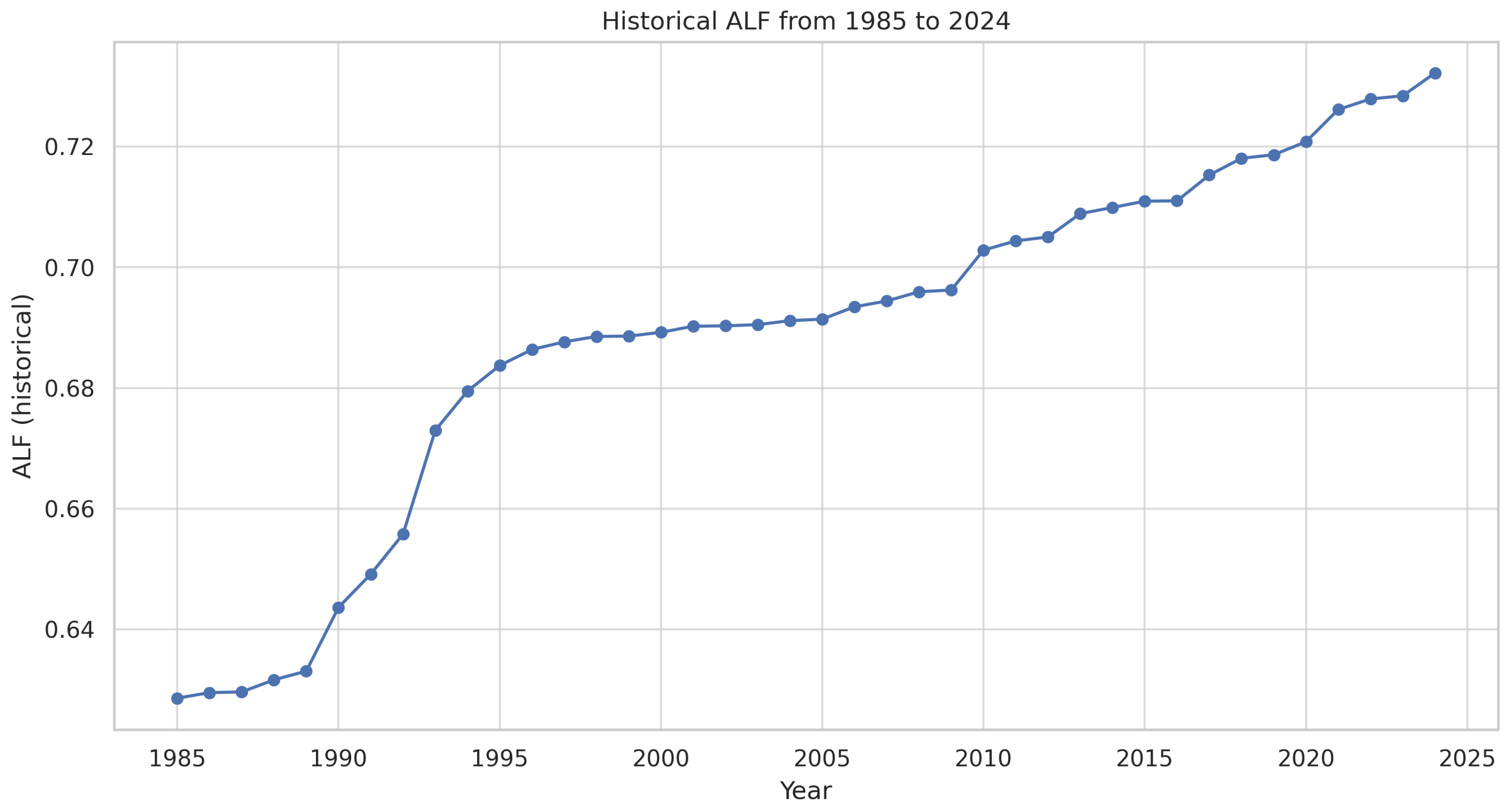
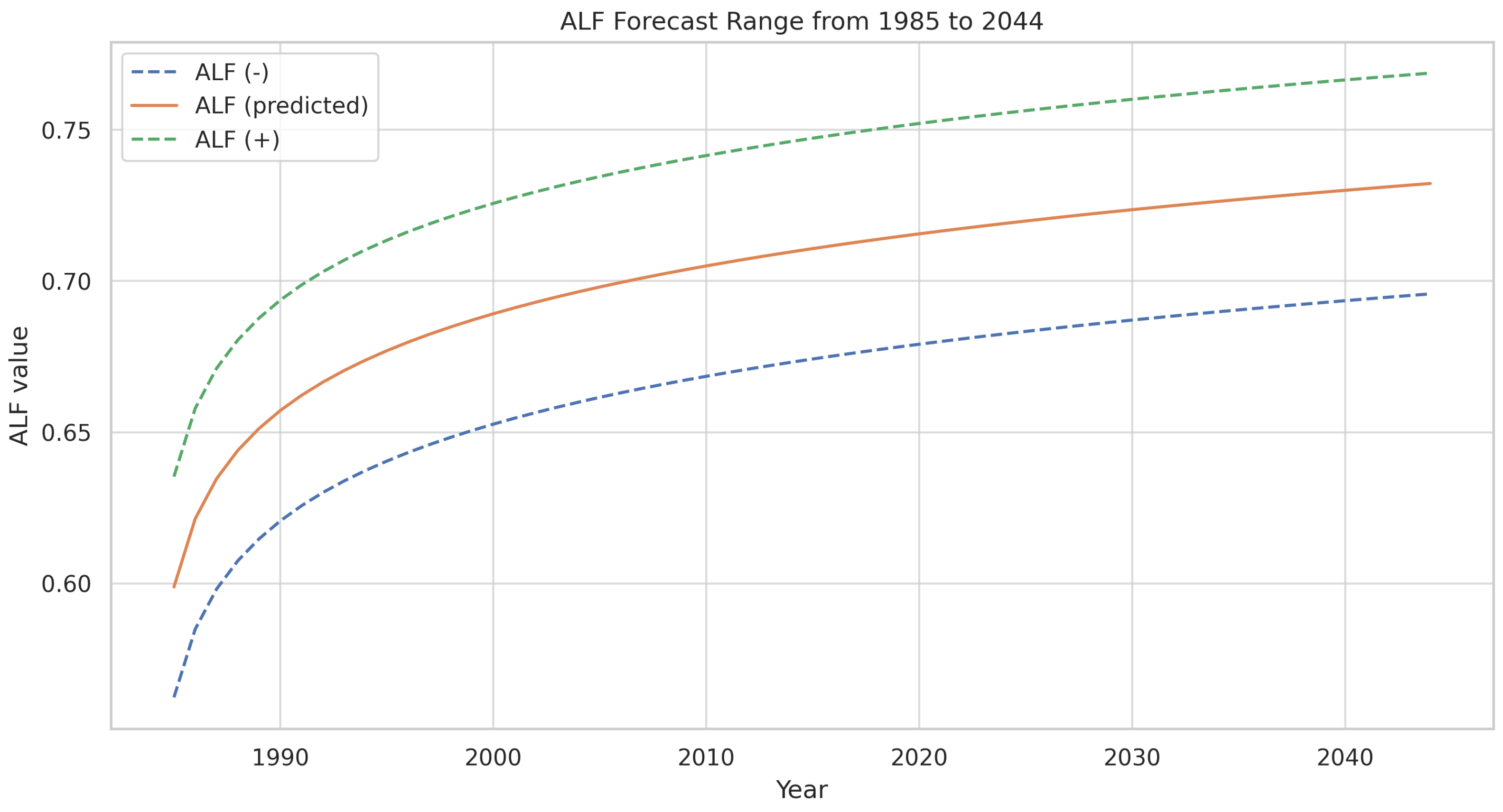
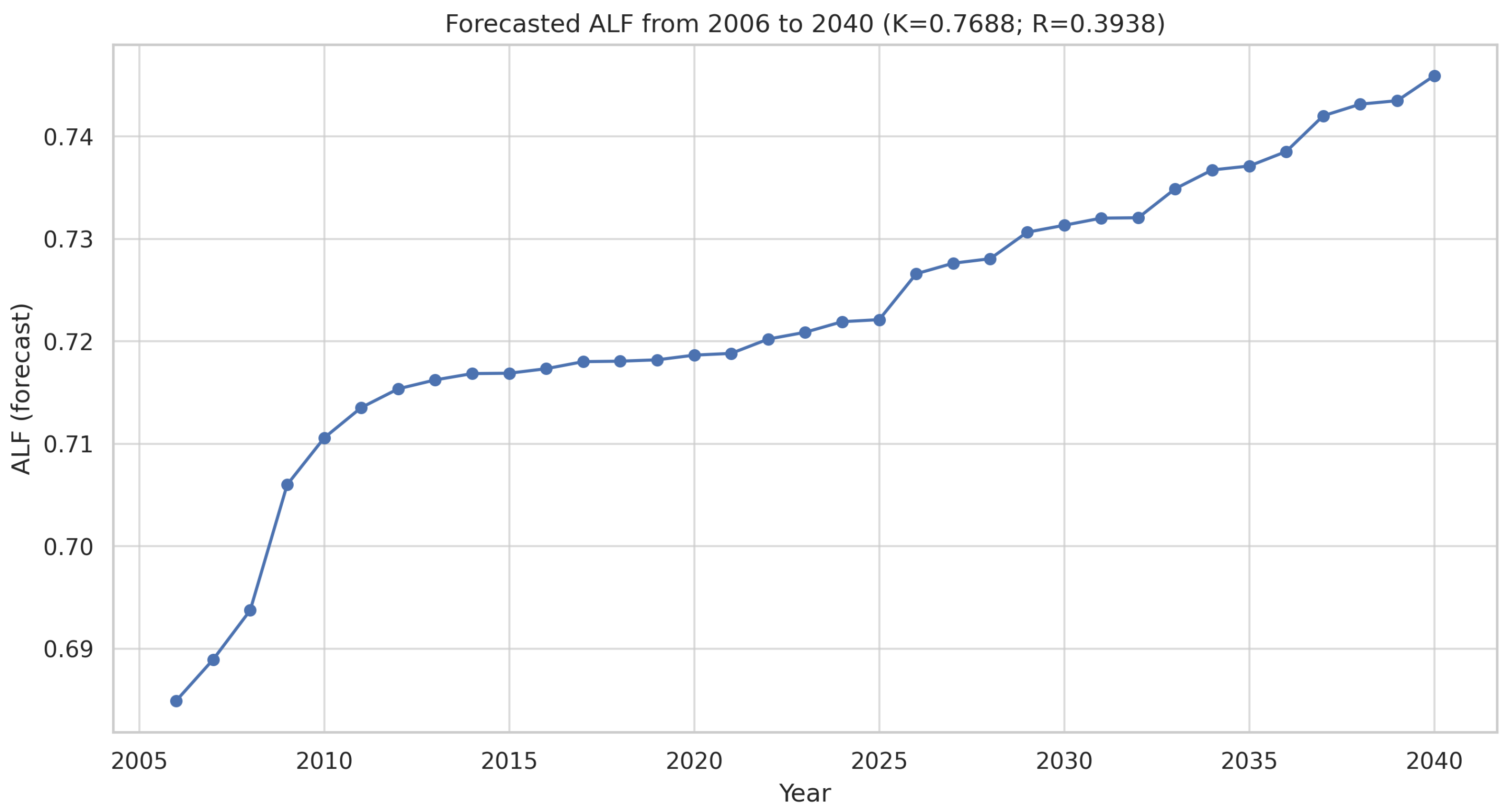
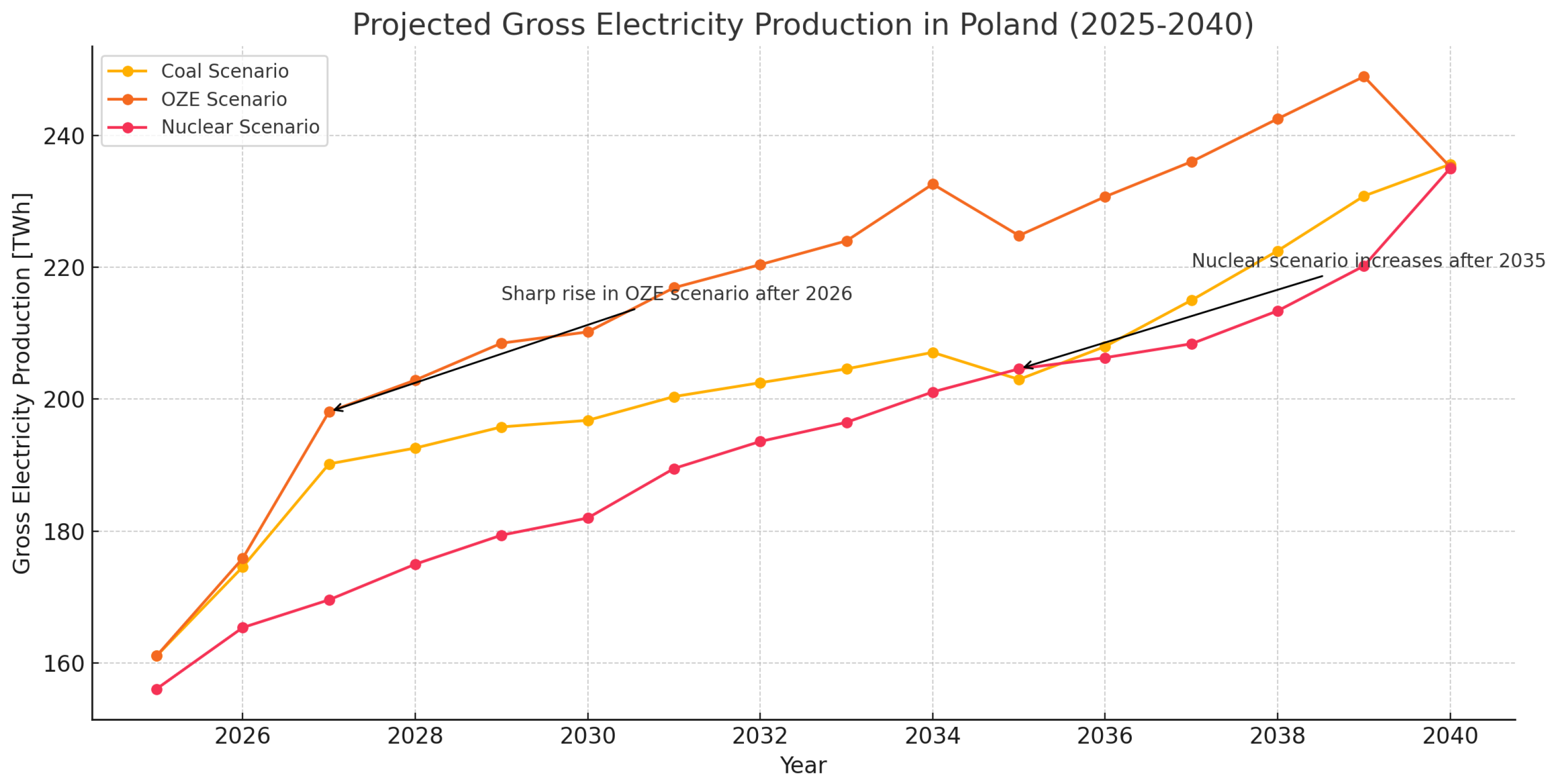
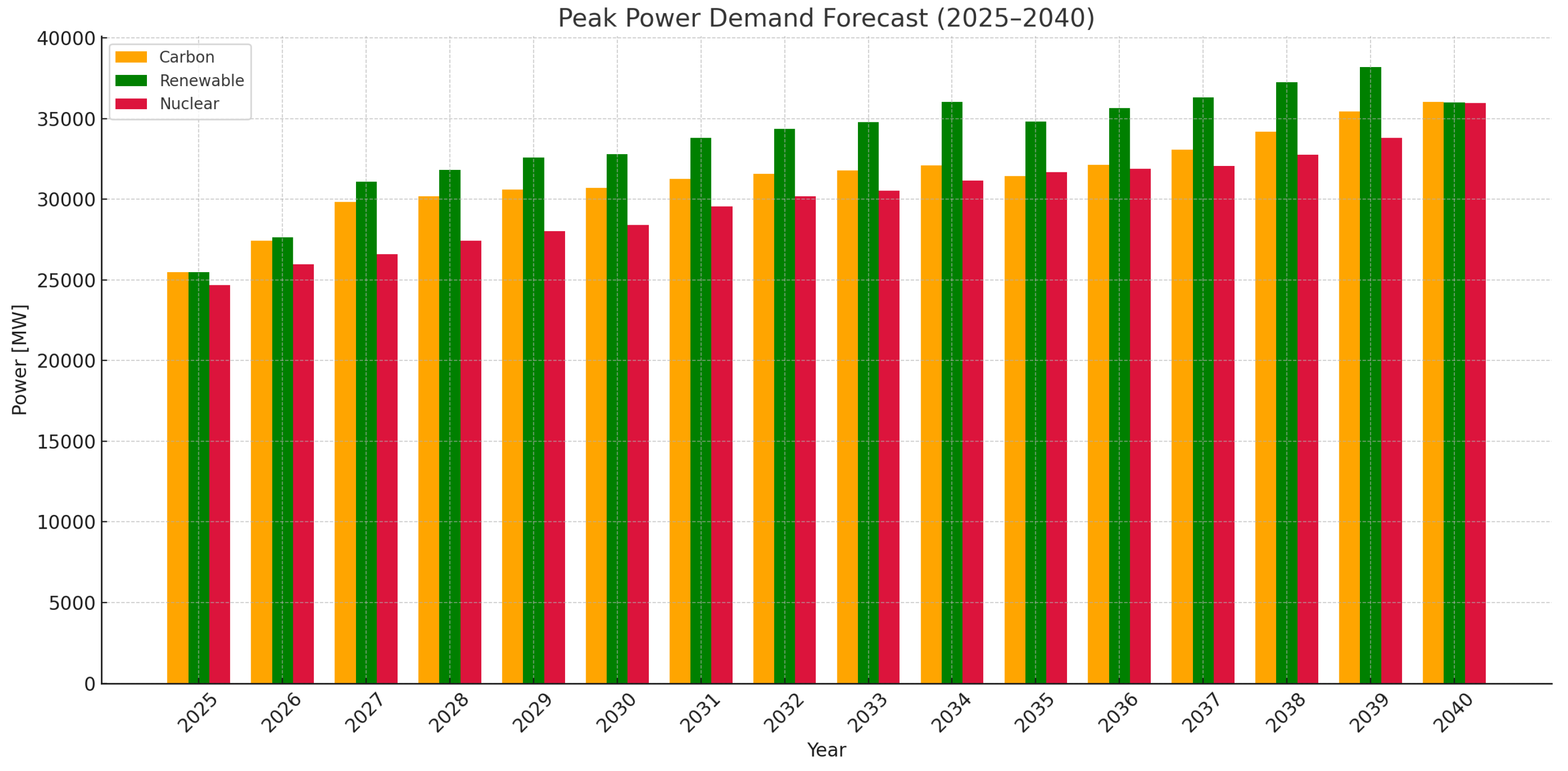
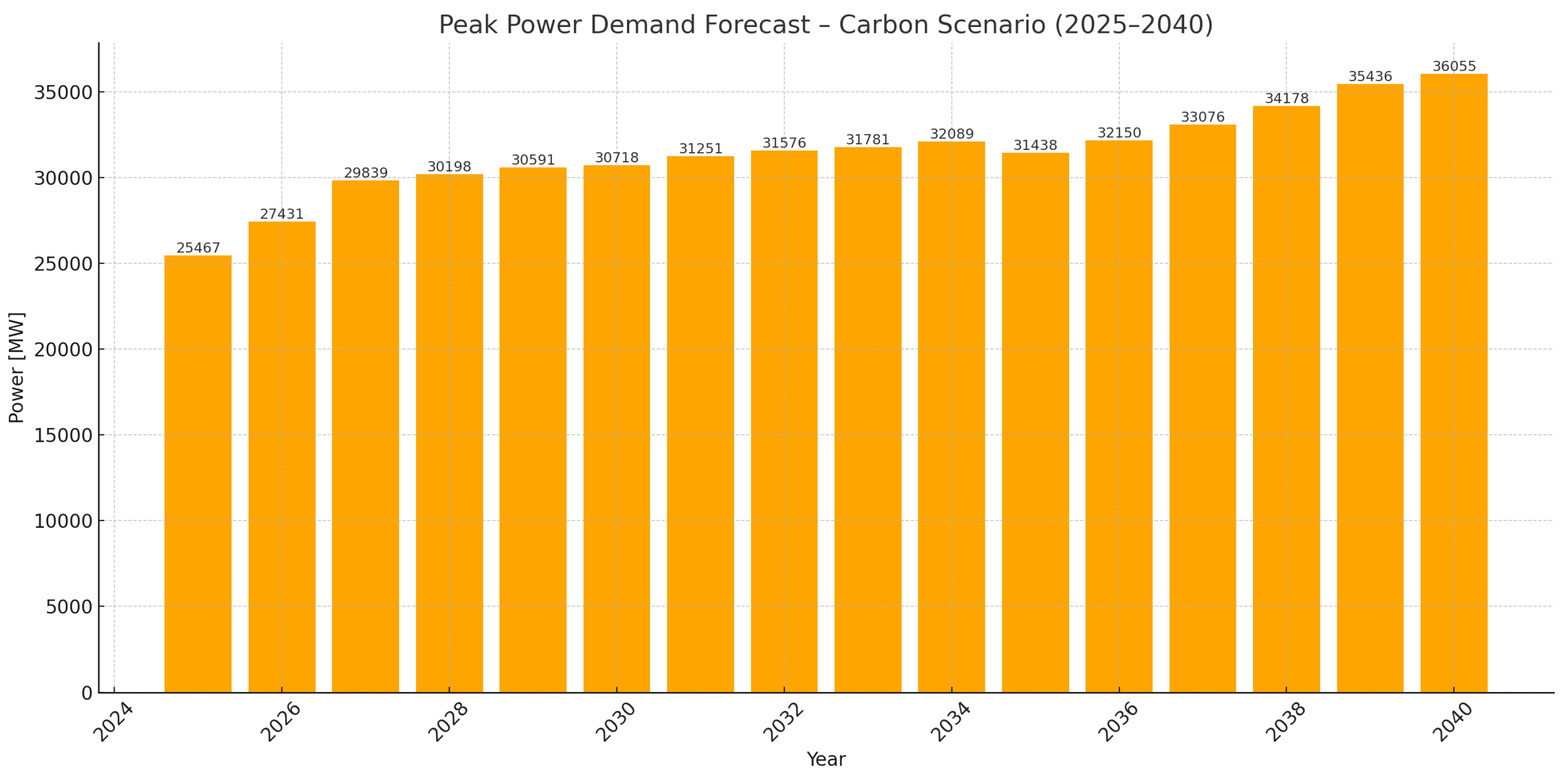
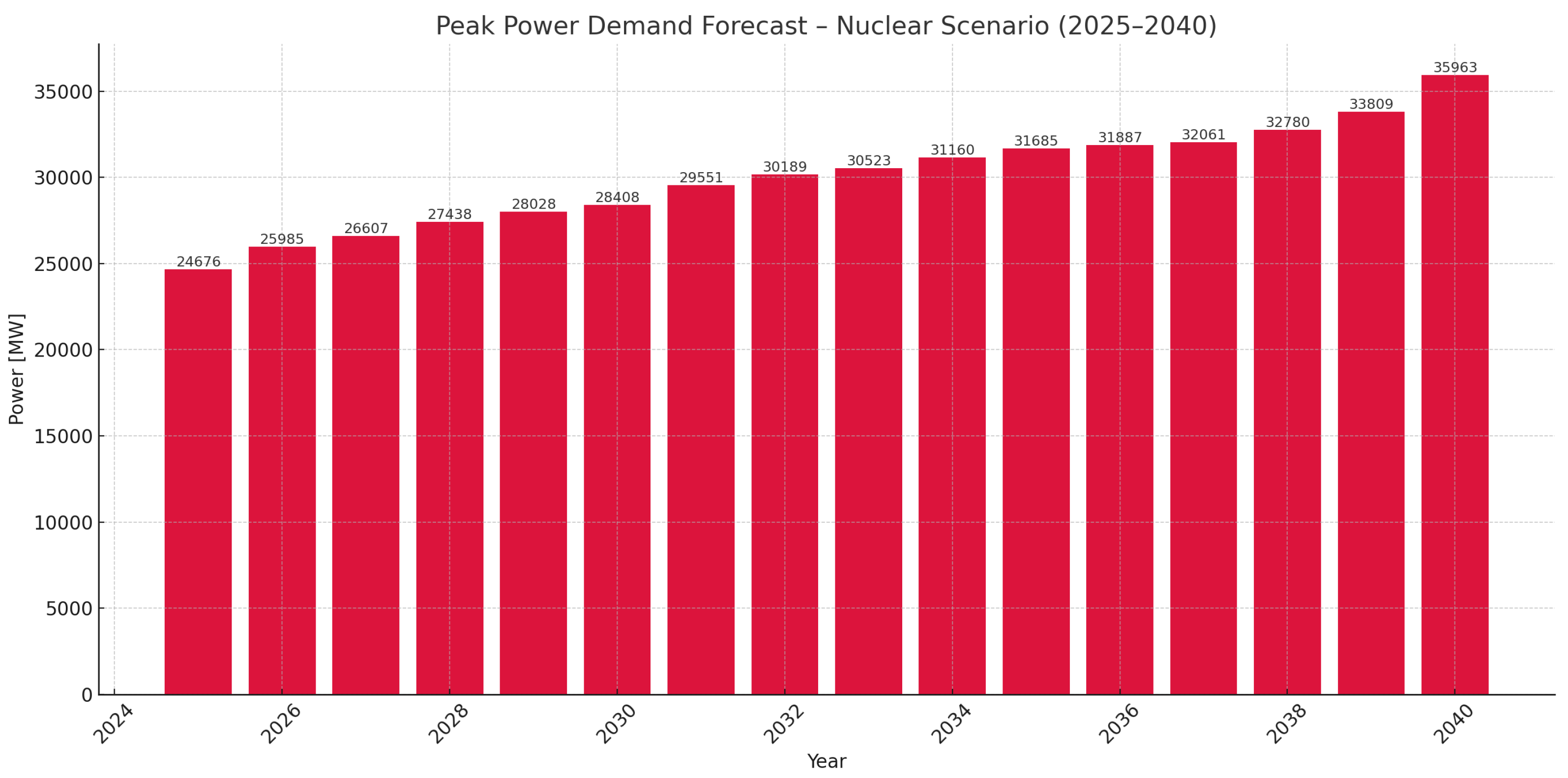
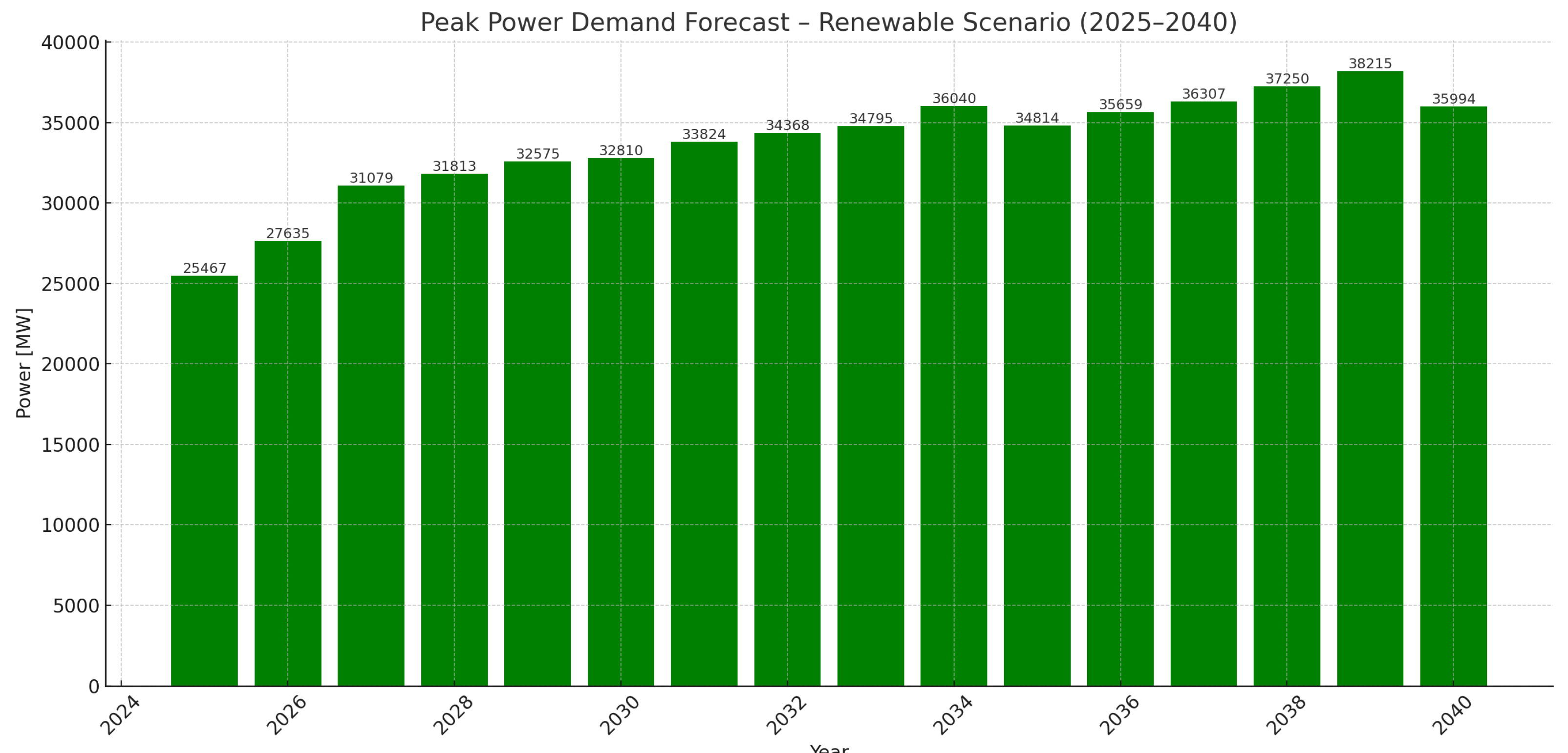
| Feature | Simplified Forecasting Models | Advanced Forecasting Models | Source |
|---|---|---|---|
| Complexity | Low—simple equations, limited number of variables | High—many variables, complex model structure | [12,28] |
| Input data requirements | Low—historical data, fundamental indicators | High—detailed sector, technology and demographic data | [27,29] |
| Cost of and time taken for implementation | Low cost, fast implementation | High cost, time-consuming | [28] |
| Example methods | Linear regression, trend extrapolation, individual indicators | Bottom-up simulations, econometric models with dynamic structures, AI/ML | [12,28] |
| Scenario flexibility | Limited—difficulty in analyzing the impact of policy or technology changes | High—possibility of creating different scenarios (e.g., considering impact of electromobility) | [27,28] |
| Transparency of results | High—easy interpretation | Low—results often require advanced analysis | [27] |
| Long-term accuracy | Medium to low—high sensitivity to external changes | High—more resistant to variability of conditions | [28,29] |
| Applications | Developing countries, rapid analysis, early planning stages | Strategic planning, large-scale power systems | [12,28] |
| Year | [-] | — [-] | MAPE [%] |
|---|---|---|---|
| 2014 | 0.7099 | 0.7097 | 0.02 |
| 2015 | 0.7109 | 0.7107 | 0.02 |
| 2016 | 0.7110 | 0.7117 | 0.09 |
| 2017 | 0.7152 | 0.7127 | 0.35 |
| 2018 | 0.7180 | 0.7137 | 0.59 |
| 2019 | 0.7186 | 0.7147 | 0.54 |
| 2020 | 0.7208 | 0.7156 | 0.72 |
| 2021 | 0.7261 | 0.7165 | 1.32 |
| 2022 | 0.7278 | 0.7173 | 1.44 |
| 2023 | 0.7284 | 0.7182 | 1.40 |
| 2024 | 0.7322 | 0.7190 | 1.80 |
| Scenario | Source | Demand in 2040 [TWh] |
|---|---|---|
| A | PEP 2040 (2021) 1 | 230 |
| B | Scenario 3 2 | 244 |
| C | FNEZ 3 | 235 |
| D | PSE S.A. 4 | 243 |
| Year | [MW] | [MW] | MAPE [%] |
|---|---|---|---|
| 2014 | 25,535 | 25,479.0 | 0.22 |
| 2015 | 25,101 | 25,637.0 | 2.14 |
| 2016 | 25,546 | 25,859.9 | 1.23 |
| 2017 | 26,231 | 26,232.6 | 0.01 |
| 2018 | 26,448 | 26,549.0 | 0.38 |
| 2019 | 26,504 | 26,861.9 | 1.35 |
| 2020 | 26,799 | 26,209.4 | 2.20 |
| 2021 | 27,617 | 26,679.6 | 3.39 |
| 2022 | 27,296 | 26,944.9 | 1.29 |
| 2023 | 27,326 | 26,951.7 | 1.37 |
| 2024 | 28,660 | 26,717.1 | 6.78 |
Disclaimer/Publisher’s Note: The statements, opinions and data contained in all publications are solely those of the individual author(s) and contributor(s) and not of MDPI and/or the editor(s). MDPI and/or the editor(s) disclaim responsibility for any injury to people or property resulting from any ideas, methods, instructions or products referred to in the content. |
© 2025 by the author. Licensee MDPI, Basel, Switzerland. This article is an open access article distributed under the terms and conditions of the Creative Commons Attribution (CC BY) license (https://creativecommons.org/licenses/by/4.0/).
Share and Cite
Popławski, T. Long-Term Forecast of Peak Power Demand for Poland—Construction and Use of Simplified Forecasting Models. Energies 2025, 18, 3472. https://doi.org/10.3390/en18133472
Popławski T. Long-Term Forecast of Peak Power Demand for Poland—Construction and Use of Simplified Forecasting Models. Energies. 2025; 18(13):3472. https://doi.org/10.3390/en18133472
Chicago/Turabian StylePopławski, Tomasz. 2025. "Long-Term Forecast of Peak Power Demand for Poland—Construction and Use of Simplified Forecasting Models" Energies 18, no. 13: 3472. https://doi.org/10.3390/en18133472
APA StylePopławski, T. (2025). Long-Term Forecast of Peak Power Demand for Poland—Construction and Use of Simplified Forecasting Models. Energies, 18(13), 3472. https://doi.org/10.3390/en18133472







